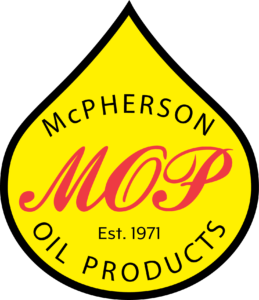Kick Start a Comprehensive Lubrication Program
07 Oct 2019, Posted by in Oil Tips Lubricants are an essential part of the operation of industrial machinery. Of all the numerous purchases made by industrial customers, lubricants can potentially have one of the most profound effects on their profits. Just take a look at the 10 lubrication steps listed below. Each tip provides a valuable opportunity for you to work with your lubricant supplier to reduce expenses and enhance your plant’s operational efficiency.
Lubricants are an essential part of the operation of industrial machinery. Of all the numerous purchases made by industrial customers, lubricants can potentially have one of the most profound effects on their profits. Just take a look at the 10 lubrication steps listed below. Each tip provides a valuable opportunity for you to work with your lubricant supplier to reduce expenses and enhance your plant’s operational efficiency.
1. Streamline Inventory
Work with your lubricant supplier to audit plant equipment and existing lubrication practices. This process will help you identify the fewest correct lubricants needed to meet plant requirements and operating conditions.
2. Follow lubrication instructions
Maintenance personnel should refer to the lubrication charts and schedules to identify the parts of equipment that need to be lubricated and to specify the lubricant to be used and the method and frequency of application.
3. Establish clear roles and responsibilities
To ensure proper application and avoid unnecessary labor, staff should undergo appropriate training and be made aware of their duties through a clear organization chart.
4. Reduce oil waste with longer oil life products
Synthetic products, such as Mobil SHC Series, can offer longer oil life, helping reduce labor costs, increase uptime and minimize waste.
5. Ensure proper storage and handling
Proper handling, storing and dispensing of lubricants can reduce waste. Misapplication, and fire and safety hazards while also helping prevent contamination.
6. Conduct equipment and oil inspections
Implement proper inspection methods to reveal contamination and establish filtering/drain schedules to minimize production shutdowns, reduce labor costs and extend oil life.
7. Install a filtration system
To extend the useful life of oil in centralized systems, install and effective filtration system, which also help reduce the costs associated with the proper disposal of used lubricants.
8.Maintain thorough lubrication records
Keep lubricant and operational costs to a minimum by maintaining a robust record-keeping system, which provides an initial baseline to show where improvements are needed and what results have been achieved.
9. Ensure adequate training of lubrication personnel
Reduce the risk of hazards associated with inexperienced maintenance staff through appropriate training of plant personnel. Both program leaders and lubricators must continually learn best lubrication practices as well as new techniques in their specific discipline.
10. Lower cost with preventative maintenance
Continuous analysis of operating conditions, regular inspection of equipment and examination of high-cost areas can all play a significant role in helping reduce your plant’s maintenance costs. This includes implementing a used oil analysis program, such as Mobil Serv Lubricant Analysis, to monitor the condition of oil and equipment.
At McPherson Oil, we know that a successful lubrication program for your plant means more than just delivering a product. Each year, McPherson Oil partners with its industrial clients to strengthen their lubricant programs as well as analyze your lubrication needs and challenges and work with your team to develop workable and cost-effective solutions. Contact us today to start the conversation on how our lubricant experts can help you realize cost savings.
*Source – “Work Smarter, Not Harder” – mobil.com/industrial
